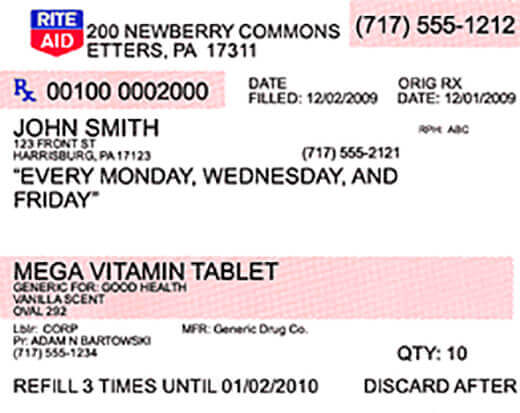
When being prescribed medication, most patients glance at the drug name and directions, hardly noticing anything else. But you’d be surprised at how information that is located on the label of your prescription drug. In fact, learning how to properly read the label of any prescription drug could possibly save the patient a lot of frustration. The easiest way to review the information on the prescription label is to group the information under 8 categories.
Patient-related information:
The first section being the patient’s information. This section should be double checked by the patient, assuring that their name is spelled correctly and if the address is included that it is also correct. This helps to guarantee that there is no mix up between patients.
Drug-related information:
The drug related information is the next section to discuss. This information is specifically related to the drug itself. This section has the drug name, strength, and quantity. An example would be, the label reading: “#30 tab Lisinopril 10mg” which would mean you are supposed to have gotten 30 tablets of Lisinopril 10mg.
Often the drug name will be abbreviated. This is due to the drug names being long. The pamphlet included with the prescription will disclose the full name though.
Direction-related information:
Prescription labels include directions of how to properly take a medication. In most cases the doctor will instruct the patient on how to take the medication when they prescribe it. An example would be “Take 2 capsules by mouth every 4 hours on an empty stomach.”
Patients should carefully read and follow the direction provided by their doctor and the prescription label.
Doctor-related information:
Your doctor’s name should be on the prescription label. Checking this is a good practice. If the doctor’s name was entered incorrectly, and your prescription needs to be refilled, the pharmacy may end up contacting the wrong prescriber. But also understand that your prescription may have actually been ordered by someone other than the patient’s normal doctor. This is very common for prescriptions written for patients being discharged from the hospital or when your doctor is part of a large practice with other physicians who might order your medication as well.
Pharmacy-related information:
Patient’s prescription should include the name of the pharmacy it was filled with along with their contact information. Often the pharmacy will include their store number following the pharmacy name.
Prescription order-related information:
Every prescription must be assigned a number, known as a serial number, but usually referred to as a “prescription number” or “Rx number.” This number is automatically generated by the pharmacy every time a new prescription is ordered. In a pharmacy, prescriptions are filed numerically. The prescription number should usually be in big, bold print on your label. This is the number you will typically use when you call the pharmacy to order refills of your prescription. When you run out of refills and your prescriber issues a new prescription, that prescription will have a new number. An example would be: RX#88443027
Date-related information:
Three IMPORTANT dates will usually appear on the prescription label. You should be familiar with each of these:
Fill Date: This is the date the prescription was actually filled on. Note, this is not necessarily the date the medication was picked up though. It is the date the pharmacy processed it on. When calculation how many days a medication should last, it is the fill date that is being taken into consideration.
Drug Expiration Date: The product in the bottle, or the cream, patches or inhaled powder…whatever it is…will have an expiration date. This is the date, beyond which, the pharmacy no longer can assure you the medication is safe to use. Get rid of it after this date. The drug expiration date may be worded in several ways, such as “do not use beyond _____” or “exp _____” or “use before ______.” Ordinarily this will be 1 year from the date it was dispensed, but it may be less than that if the medication itself has a shorter shelf-life.
Prescription Expiration Date: This is the date, beyond which the patient can no longer refill their prescription. For example, many states consider a prescription to be invalid 1 year after the date it was written. Therefore, even if the patient technically have several refills remaining, those refills become void after this date. On a prescription label this information is usually written after the refill information. For example, “may be refilled 5 times before ______(date).” After that date, it can no longer be filled. In the case of controlled substances, Federal law does not allow them to be filled or refilled beyond 6 months from the date which the prescriber wrote the prescription order was written. Therefore, even if you technically have several refills remaining, those refills become void after this date. On a prescription label this information is usually written after the refill information. For example, “may be refilled 5 times before ______(date).” After that date, it can no longer be filled. In the case of controlled substances, Federal law does not allow them to be filled or refilled beyond 6 months from the date which the prescriber wrote the prescription order.
Additional Misc. Information:
Additional information that may or may not be included on a patient’s prescription label, largely depending upon the pharmacy policies are as follows:
Pharmacist/Technician Initials: The initials of the pharmacist, and maybe even the full pharmacist name, may appear on the label. If you see 2 or 3 letters like “SP” or “MRC” typed on the label somewhere. Then it is safe to indicate they are the initials of the pharmacist responsible for filling the prescription. Some pharmacies also include the initials of the technician involved in filling the prescription as well. Safety cap preference: Child safety caps are Federally required on all prescription products, but a patient may request that their medication be dispensed in more easy-to-open bottles. Your preference might be indicated in some way on the label. For example, you might see “NSC” meaning “no safety caps.” Other pharmacies have a more subtle code for indicating when non-safety caps should be used, like an “*” appearing somewhere on the label.
Bar code: A prescription label may have a bar code. This bar code indicates that the pharmacy utilizes technology to scan the label and cross check it by scanning the barcode on the

